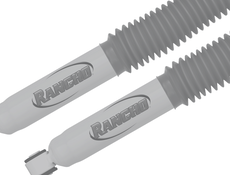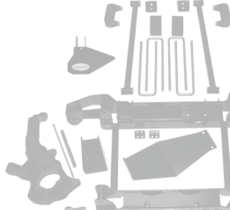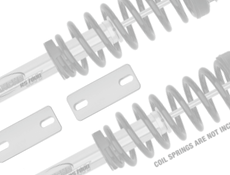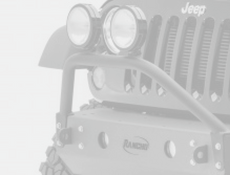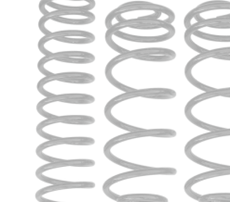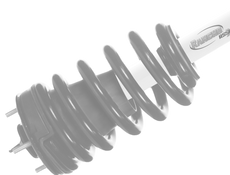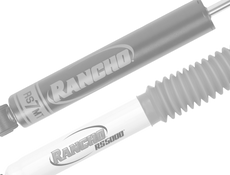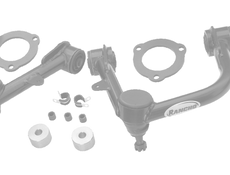Spacers vs Lift Kit
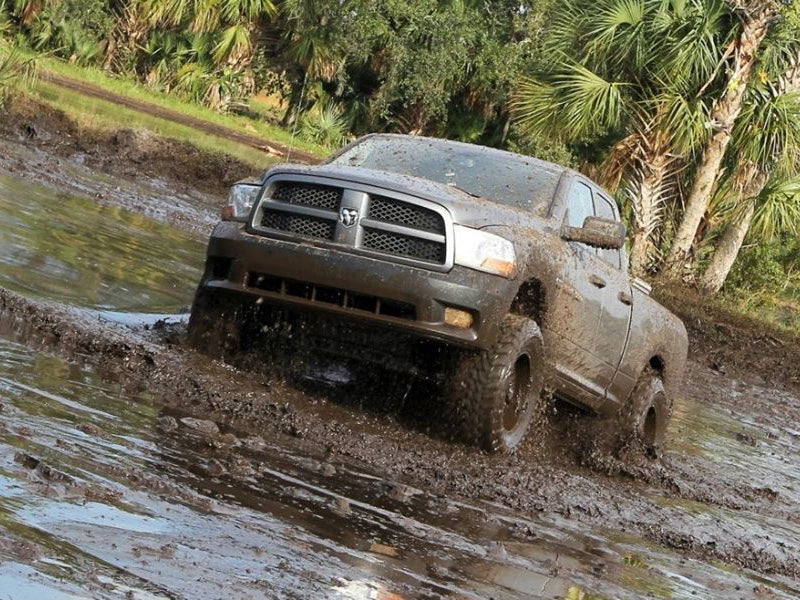
Making Your Vehicle Your Own
Customizing your Jeep, truck or SUV is a great way to improve its performance or to give it a new look. Depending on your goals, you may choose to install a spacer kit or suspension lift kit on your vehicle; but how do you decide which is right for you? While both spacer kits and suspension lift kits are designed to raise your vehicle, they do it in different ways that will affect the outcome of each installation. Read on to learn the differences between spacer kits and suspension lift kits.
What are SpacerS?
Spacers fit above the existing coil springs or strut unit and raise the vehicle 1" to 2.75" without any extra articulation to the strut modules or coil spring. This is a less expensive option because it works with the existing factory or aftermarket coil springs or struts. Designed to keep the factory ride characteristics, the addition of spacers won’t change the spring rate; the frame remains in its current position.

Advantages of Spacer Lift Kits
- Works with Existing Coil Springs and Struts – A spacer kit works with factory and coil springs and struts.
- Easy to Install – Installing spacers is less complicated and takes less time than overhauling the suspension system. You don’t need to disassemble the strut and it doesn’t require the use of a coil spring compressor.
- Bigger Tires and Wheels – Spacers can accommodate larger tire and wheel setups.
- Less Expensive – With fewer components, this is an economical option that can fit in a smaller budget.
- Preserves Factory Ride – Since a spacer kit retains the factory coil springs and struts, the vehicle maintains a similar ride to stock when installed correctly.
- Economical Solution – A spacer lift kit is an economical solution to level a vehicle equipped with coil springs.
Disadvantages of Spacer Lift Kits
- Limited Amount of Lift – Because there is a limit as to how high the vehicle can be from the frame, spacer kits only let you raise your vehicle a few inches while retaining CV angles within OE specs.
- Doesn’t Change Spring Rate – With no change in spring rate, there won’t be any change in the ride of the vehicle. Please note that if you put a larger tire on a stock coil, the coil and shock aren’t tuned for the added tire size.
- Increased Wear to Components – Many taller lifts can max out the travel of ball joints, tie rod ends and CV joints, which may cause damage to joints, steering knuckles and steering rack.
- Topping Out – Taller lifts can cause harsh “topping out” when components reach extent of their design travel.
Bottom Line
A spacer kit is a great option for getting a small lift on your truck or SUV without altering ride quality. It can be ideal for a daily driver vehicle that is occasionally driven off-road. Use a spacer kit to sit a bit higher for a better view or for the ability to put larger tires on your vehicle. A spacer kit can also raise the nose of the vehicle to give it a more level stance. Taller spacer lifts are more suited to solid axle vehicles where you don’t have issues with overextending other suspension components.

What Are Suspension Lift Kits?
More comprehensive than a spacer kit, a suspension lift kit replaces the factory suspension to raise the height of the vehicle. It not only gives you additional height, but you’ll also see gains in suspension travel and ground clearance. Suspension lift kits come with additional components such as springs, shocks and control arms. A lift kit is valuable for off roading; it can help keep suspension components from being damaged by rocks and other debris.

Advantages of Suspension Lift Kits
- More Lift – A suspension lift kit gives you the ability to add more lift to your vehicle than a spacer kit; typically 3" to 6".
- Complete Solution – Including components such as control arms, bump stop relocators, sway bar spacers or links, brake line mounts, and adjustable track bars, it can keep or improve ride even with additional lift.
- Increased Ground Clearance – A suspension lift kit can help your vehicle handle bumps and other obstacles on the road better, which is key for off-roading and rock crawling.
- Variety – From lift kits with shocks and struts to kits that include control arms and coil springs, there is a lift kit to help you achieve the goals you have for your vehicle.

Disadvantages of Suspension Lift Kits
- Involved Installation – Because of all of the parts required for installation, this is a job best left to a shop or an experienced DIYer. This can be a time-consuming project.
- Gas Mileage – With the addition of larger tires and a higher body that creates more surface area for the wind to drag against it, a lifted vehicle with a larger tire/wheel combo can experience reduced fuel economy.
- Getting In-and-Out – When raising your vehicle with a suspension system, it may be hard to get in-and-out of due to it sitting higher. Kids and others may need some assistance when climbing in and getting out of the vehicle.
Bottom Line
If you spend a lot of time on the trail, a suspension lift kit is a comprehensive solution for increasing ride height and ground clearance – two things most off-roaders are looking for.Making the Right Choice
When deciding between spacers and a suspension lift kit, considering these factors can help you come to the right decision for you. Keep in mind that this isn’t a case of one being better than the other; it all depends on your situation. Taking the time to think about what you’re looking to get out of the installation can help you make an informed decision.
- Vehicle Usage – How are you using your vehicle? If you’re looking to install bigger tires and sit a little higher, a spacer kit might be the right choice for you. However, if you plan on hitting the trail and want extra ground clearance, a suspension kit might be a better option.
- Amount of Lift - How much lift do you want? With a spacer kit, you typically can get 1" to 2.75" of additional lift. If your goals are to raise your vehicle for cosmetic purposes or to put on slightly bigger tires, this amount of lift may be enough. However if you want enough lift to help change the performance of your vehicle for trail riding and to put on even larger tires, a suspension lift kit may be the best way for you to get the amount of lift you want and to address any geometry issues that could come up.
- Budget – What is your budget for the project? Typically, a spacer kit is less expensive than a suspension kit. The difference in cost has a lot to do with the components included in each kit. With a spacer kit, you typically get the spacers and any necessary hardware, while a suspension lift kit has more components such as shocks, struts, coil springs and control arms.
- Installation – Who’s doing the installation? Are you doing the project yourself or are you going to take your vehicle to a shop to have the work done? If you’re tackling the installation yourself, your skill level may play a role in which one you choose. A spacer kit is a less-involved installation that can be taken on by beginner or intermediate DIYer, while a suspension kit is an advanced procedure that should be tackled by an experienced DIYer.
Learn more about performance shocks, find your performance suspension part, or find where to buy your shock or suspension part today.
The content in this article is for informational purposes only. You should consult with a certified technician or mechanic if you have questions relating to any of the topics covered herein. Tenneco will not be liable for any loss or damage caused by your reliance on any content.
